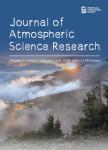版权所有:内蒙古大学图书馆 技术提供:维普资讯• 智图
内蒙古自治区呼和浩特市赛罕区大学西街235号 邮编: 010021
T=题名(书名、题名),A=作者(责任者),K=主题词,P=出版物名称,PU=出版社名称,O=机构(作者单位、学位授予单位、专利申请人),L=中图分类号,C=学科分类号,U=全部字段,Y=年(出版发行年、学位年度、标准发布年)
AND代表“并且”;OR代表“或者”;NOT代表“不包含”;(注意必须大写,运算符两边需空一格)
范例一:(K=图书馆学 OR K=情报学) AND A=范并思 AND Y=1982-2016
范例二:P=计算机应用与软件 AND (U=C++ OR U=Basic) NOT K=Visual AND Y=2011-2016

Water temperature is a key abiotic factor influencing aquatic ecosystem health and the services provided to both nature and humans. Global water temperature models offer possibilities to improve our understanding of water temperature regimes, which is increasingly important against the backdrop of climate change. Yet, existing studies have predominantly relied on a single model, which can lead to an incomplete representation of uncertainty and potential biases, in addition to limited insight into the range of possible future conditions, which ultimately reduces the robustness of climate impact assessments. Here, we provide a comprehensive assessment of surface freshwater temperature changes from various river and lake models for both past conditions and under future scenarios of climate change. Global models consistently simulate that surface water temperatures are currently 0.5 °C–0.8 °C higher than at the turn of the century (i.e. 1981–2000), and that warming will extend and intensify with future global change throughout the 21st century. While the strength of warming is highly sensitive to the different water temperature models, emissions scenarios and global climate models, our multi-model ensemble shows a global average annual water temperature rise of between +1.3 °C and +4.1 °C by the end of the century. To illustrate a potential societal impact of our results, we evaluate how future changes in discharge and water temperature may affect existing thermoelectric power plants, estimating average annual reductions of 1.5%–6% in global usable capacity by the end of the century. However, with river water temperatures projected to exhibit more pronounced seasonal patterns in the future—especially under the more extreme climate change scenarios and during summer months in the Northern Hemisphere—intra-annual reductions in usable capacity can be much more severe. Given the challenges associated with (large-scale) adaptation to control water temperature regimes, str






电话和邮箱必须正确填写,我们会与您联系确认。
版权所有:内蒙古大学图书馆 技术提供:维普资讯• 智图
内蒙古自治区呼和浩特市赛罕区大学西街235号 邮编: 010021

暂无评论